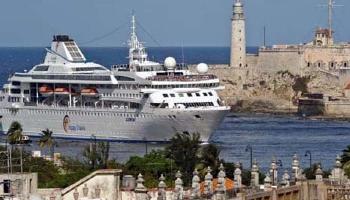More than 90 meters above street level, specialists from the Office of the City Historian (OHC) are in charge of cleaning the façade, strengthening the concrete and steel structures and rescuing decorative elements.
In addition, Russian experts are participating in the works, and will be in charge of placing gold-plated sheets on the top of the emblematic building, as it was originally. They are also in charge of carrying out a similar process in the Statue of the Republic.
The scintillator, an artifice that made the Cuban Capitol a pioneer in its time in this type of technology, will also be rescued, along with the installation of a modern system of LED lights around the entire facade.
Mariela Mulet Hernandez, head of the Prado investment group of OHC’s budgeted investment unit, explained exclusively to ACN that the rehabilitation of the dome is one of the most complex tasks in the institution’s integral conservation program.
Before beginning the works, a study was carried out to verify the strength of the plates that make up the dome. Fortunately, the result was that it was not necessary to reinforce them, however, in certain cases it was necessary to replace the stones that make up some nerves in order to strengthen them, she explained.
As in the rest of the building, this level is the installation of modern security systems, electricity, hydraulics, among others, which is an additional challenge for technicians and specialists, since they must be placed in such a way that they do not break with the original image.
Due to the symmetry and detail in all its decorative and architectural elements, the dome is one of the most relevant areas in the Capitol, whose restoration works are around 80 percent of development and should be completed next year.
Inaugurated in 1929, the Capitol has hosted important events in Cuban history and after the Triumph of the Revolution it became the seat of several Cuban scientific institutions until it was handed over to OHC for restoration in 2010.





